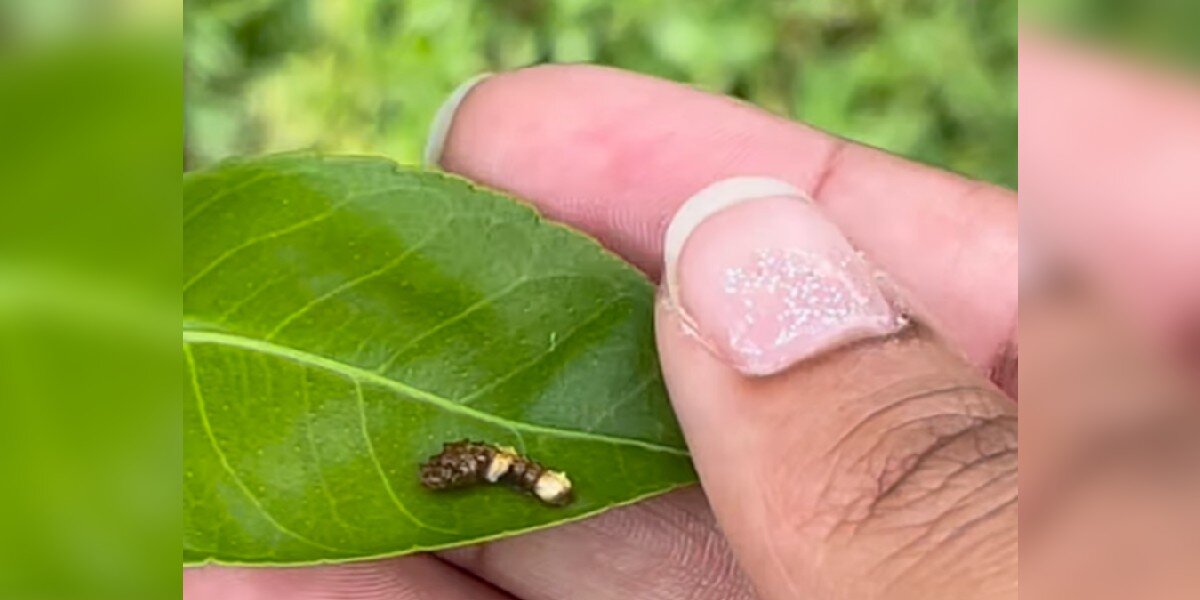If you saw this white and grayish blob sitting on a leaf, what would you think it was?
If your first thought was “bird poop,” you’re actually not too far off. But if you look a little more closely, you might start to notice the “poop” looking almost … alive.
That’s because it’s actually a caterpillar — a bird poop caterpillar. Yes, that’s the actual name most people use to refer to eastern giant swallowtails when they’re in their larval phase.
Bird poop caterpillars’ resemblance to their namesake isn’t coincidental — it’s their goal to look as unappetizing as possible. Their coloring is an adaptation designed to make them fly under predators’ radars.
A few months ago, Tala Alleyne started noticing what looked like bird droppings on her backyard lemon plant. She didn’t understand why her local birds seemed to be obsessed with using that specific plant as their bathroom.
But as a butterfly and moth expert, Alleyne quickly pieced together that her plant had become home to a group of bird poop caterpillars. When eastern giant swallowtails are in their larval phase, their favorite things to eat are citrus leaves.
Over the next few weeks, Alleyne watched as the caterpillars continued munching away at her leaves and getting bigger and bigger every day.
“[As] they continue to grow, they’ll look less like a slimy piece of dud and even more like a dried up and even bigger piece of dud,” Alleyne said on Instagram.
Alleyne also got to observe the caterpillars’ second line of defense against predators. When the caterpillars feel threatened, they release a red, forked appendage that resembles a snake’s tongue called an osmeterium, designed to scare away whoever’s attacking them.
When the caterpillars started forming chrysalises, Alleyne knew they were almost ready to turn into their final forms. Alleyne watched in awe as a beautiful butterfly emerged from her case and spread her multicolor wings.
As adults, eastern giant swallowtails are between 5 and 6 inches long and are actually the largest butterflies in North America. It’s hard to believe that such a gorgeous butterfly could have come from such a humble caterpillar. But eastern giant swallowtails are a great reminder to never judge an insect by their larval phase.
Next time you see what looks like bird droppings on a citrus leaf, look a little closer. You might end up finding a butterfly in the making.
